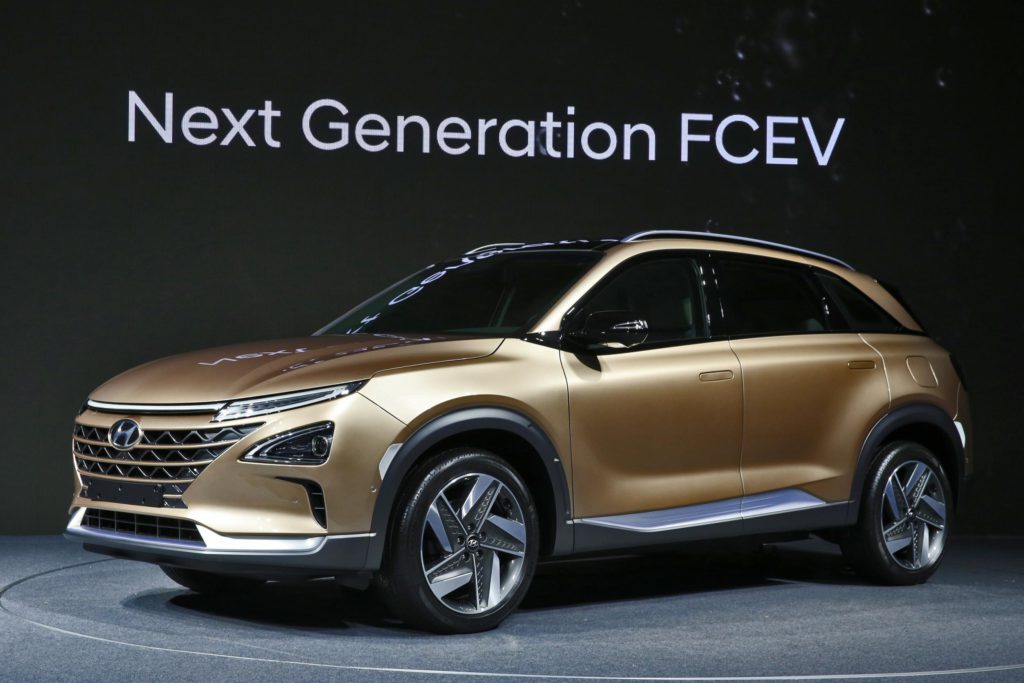Hyundai plans electrification of European fleet while looking to a hydrogen future
23 November 2017

23 November 2017
Korean vehicle maker Hyundai has plans to add a number of electric vehicles (EVs) and plug-in hybrids to its European model range, as well as introducing hydrogen fuel cell vehicles (FCVs) to the market.
The company wants to have 10 electrified models available by 2020, with four EVs and a mix of hybrid and plug-in hybrids making up those numbers. However, Hyundai does not believe that electric is the future due to their high prices and long charging times.
Speaking to Automotive News Europe, Hyundai Europe chief operating officer Thomas Schmid comments: ′I don’t believe full electric will be the solution because even five years from now the infrastructure won’t be sufficient. You need half an hour to reach an 80% recharge, so if you have hundreds of cars on the motorway you would need a lot of charging stations. It will take time. During the transition phase, plug-in hybrids and hybrids will be a solution for long distance travel. For cities, full-electric could work. Altogether, these alternative propulsion modes, including fuel cells, could reach 20% of the market in five years.’
Schmid also suggests that in order for electric vehicles to reach mass production, prices need to decrease, an obstacle that won’t affect premium brands, but will impact those selling value vehicles, due to the price of components and the profit margins within.
Therefore, Hyundai is pinning its future hopes on hydrogen, with a new FCV-based SUV being launched in 2018. The vehicle is expected to have an 800 kilometre range and autonomous capabilities. There is likely to be little demand to start with – Schmid estimates sales in the hundreds due partly to demand outstripping production capabilities. So far the company has sold 600 FCVs in Europe.
Asked what the biggest hurdle is for FCVs, Schmid commented: ′Infrastructure. Our main customer is a taxi company in Paris [that ordered 60 units of the ix35 fuel cell in late 2016]. They have a re-fuelling station in cooperation with Air Liquide near Pont de l’Alma in Paris. We are also present in Denmark, Norway and in the Munich area of Germany. The infrastructure across Europe is still very fragmented.
′It is a chicken-and-egg problem. We are cooperating with the companies that provide refuelling stations. In Munich it is Linde. Denmark currently has the best infrastructure and you can drive across the country using a fuel cell car. In Germany, we only have 36 re-fuelling stations. You can’t even drive from Frankfurt to Berlin and back. But that’s better than Italy, where only one hydrogen fuel station exists, in Bolzano.’
Governments around Europe are waking up to the idea of hydrogen, with the UK recently detailing plans of investment in the refuelling infrastructure to encourage hydrogen sales in the country. The involvement of other manufacturers backing the technology could spur such developments further.
Meanwhile, according to media reports, Kia plans to start series production of fuel cell vehicles by the end of 2020. The planned hydrogen SUV is to build on the successor model of the Sorento. The company, a sister brand of Hyundai, plans to build 4,000 units for the global market each year.
Photograph courtesy of Hyundai